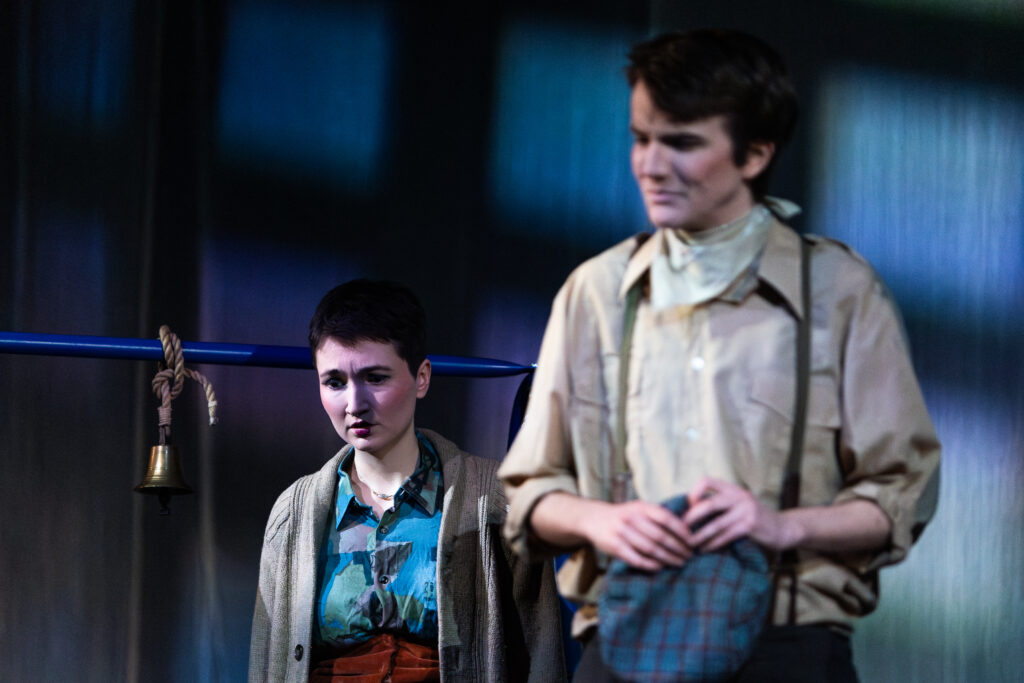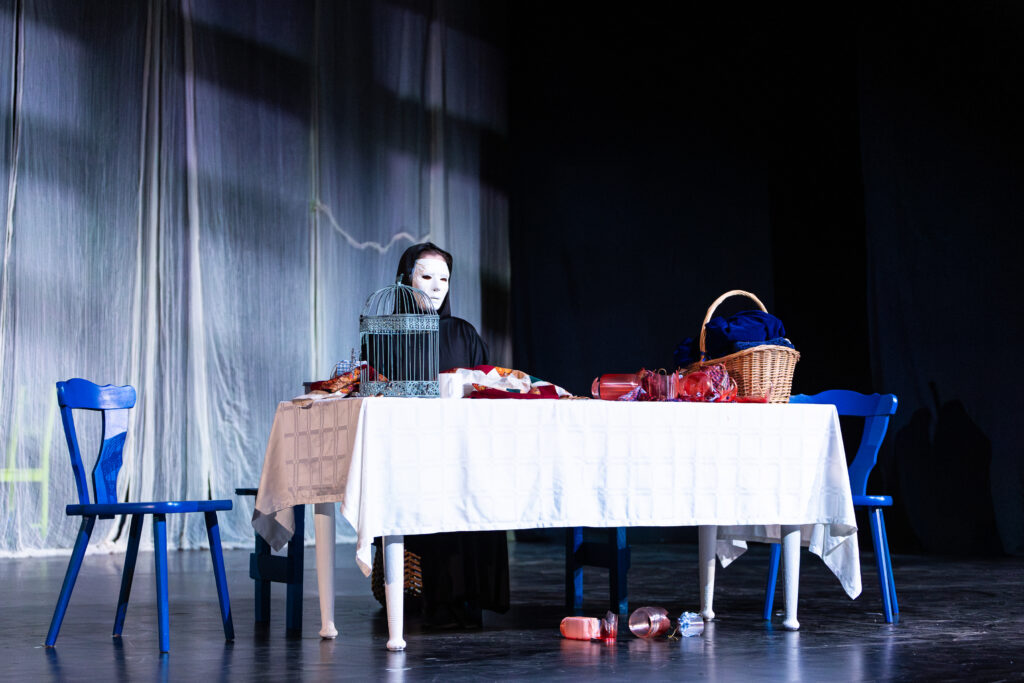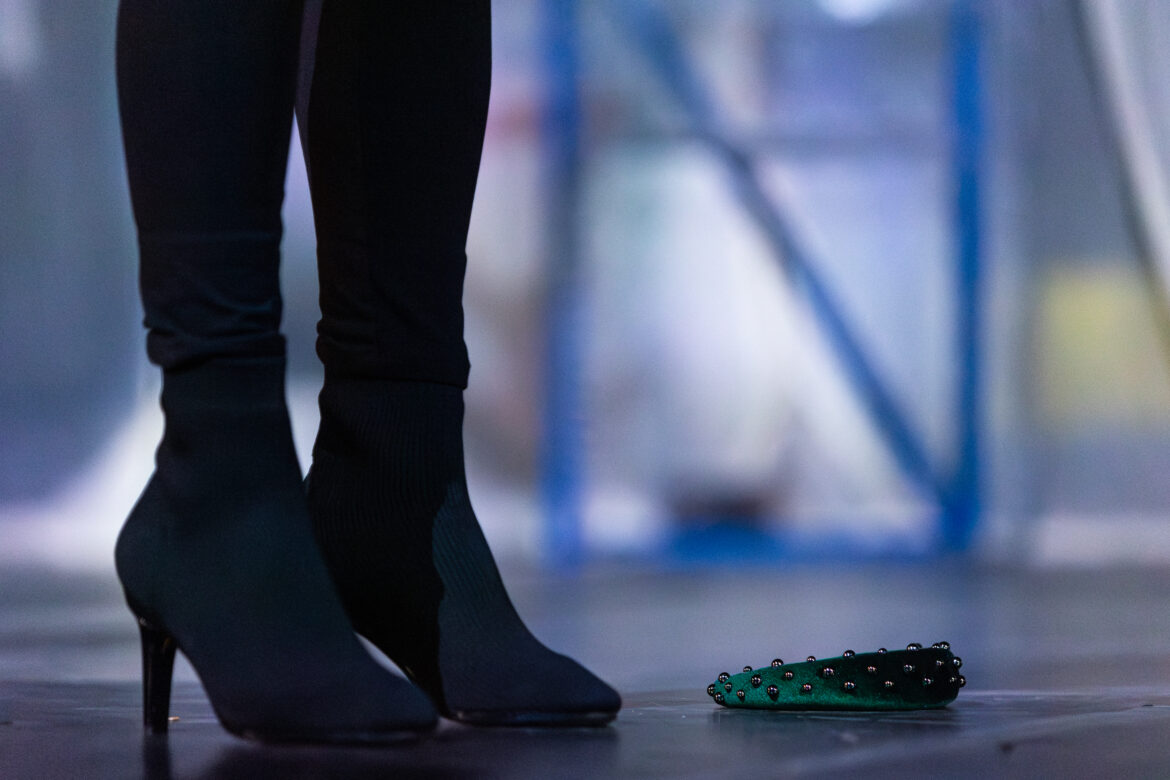By Carlo Schulte
“To be, or not to be: that is the question.” The theater is a place where great ideas, interpretations and the minds of geniuses are opened and shown to the world, making impact on our behaviour and our view on the world around us. It works with and against our time and has the opportunity to cause change. Not only discussing popular and comfortable topics but also criticising our ideas and the circumstances we are in. Trifles tries to pursue exactly this: it addresses the problems of our legal and societal system, originally set in a time in that the portrayed views weren’t as accepted as today. Although the history of the play is interesting, the University Players have done a horrible job in modernizing the play and also attracting the viewers’ attention, boring the audience to a point where they are not much different to the portrayed dead bird.
In Trifles, a group of men including the sheriff, the county attorney, and a neighbor, Mr. Hale arrives at the Wrights farmhouse to investigate the murder of John Wright, who was found strangled in his bed. Their wives, Mrs. Hale and Mrs. Peters, accompany them but are dismissed as they quietly observe the household. As the men search for direct evidence, they overlook the details in the kitchen and criticize the women for focusing on what they consider insignificant matters “trifles.”

However, Mrs. Hale and Mrs. Peters notice signs of Mrs. Wright’s emotional suffering: her unfinished sewing, a broken birdcage, and, most crucially, a dead canary with its neck wrung. They piece together that Mrs. Wright lived in isolation and that her husband likely killed the bird, which was her only source of comfort. This act seems to have been the breaking point that led her to strangle him in return. Realizing the emotional abuse Mrs. Wright endured, the women empathize with her situation. In an act of silent solidarity, they choose to conceal the dead bird, keeping the true motive from the men, who remain oblivious to the real story. This ending highlights the play’s themes of gender roles, female oppression, and quiet resistance.
The actors do a decent job in portraying these emotions and ideas, the female characters dominate the play while the male characters only act as support, effectively denoting the corrupt legal system. However, despite the strong thematic foundation, the execution falls flat. The dialogue, while historically relevant, feels outdated and lacks the emotional depth needed to engage a modern audience. The pacing is slow, and the lack of dramatic tension results in a (monotonous?) experience. The actors fail to bring enough energy to their roles, making it difficult for the audience to feel invested in the story. The minimalistic set design, while true to the play’s origins, does little to enhance the atmosphere or build suspense. Compared to other feminist plays, Trifles lacks emotional complexity and character development. While other plays present a more dynamic transformation of their protagonists, Trifles relies heavily on symbolism rather than direct confrontation, which can make it feel less impactful. Furthermore, in contrast to more gripping modern adaptations of feminist themes in theater, such as The Vagina Monologues, Trifles struggles to maintain audience engagement.

The audience’s behavior during the performance of Trifles, leaving early, failing to show respect, and clapping 20 minutes before the play was over, can be seen as a reflection of a broader disconnect between the production and its viewers. While not the sole reason for the lack of engagement, the nature of the play certainly didn’t help maintain interest. The slow pacing, outdated dialogue, and minimalistic staging made it difficult to keep the audience invested in the unfolding drama. As the play dragged on, it became evident that the emotional tension and stakes were not heightened enough to sustain attention, leading to restlessness among the audience. This detachment mirrors the disconnect between the male characters in the play and the women’s silent resistance, where the true significance of the story is missed or undervalued, much like how the audience failed to connect with the performance.
In conclusion, while Trifles carries an important feminist message and critiques the societal and legal system of its time, its execution in this particular performance failed to captivate the audience. The play’s slow pacing, lack of dramatic tension, and outdated dialogue made it difficult for viewers to stay engaged, leading to disruptive audience behavior that further destroyed the experience. Although the actors delivered good performances, the production failed to modernise or adapt the play for a contemporary audience. Those with a strong interest in historical feminist drama may still appreciate its themes, but for a wider audience, this production did little to make its message compelling.
Photos by Sarah Naumann


Schreibe einen Kommentar